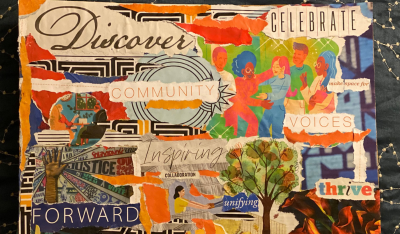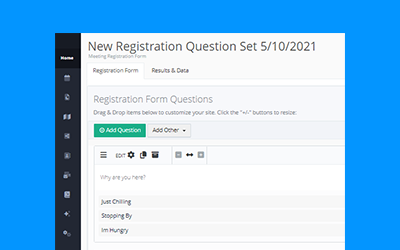NCDOT brings unified approach to public involvement to increase community engagement and accelerate projects
Building meaningful resident relationships
Diane Wilson and her team at NCDOT recognize the impact their decisions have on the day-to-day quality of life of North Carolina’s residents. With only a couple staff members dedicated to public involvement, success depends on integrating efforts in a way that saves time and effort while also ensuring project awareness and goodwill between the DOT and residents.
The Question:
How can you improve community engagement outcomes across hundreds of projects, multiple departments, and dozens of internal and external project teams?
For NCDOT the answer came in bringing a unified approach to engagement with a new breed of cloud-based solutions: public engagement software.
Integrating community engagement into one dashboard
Through a coordinated effort, NCDOT has not only been able to disseminate information about upcoming public meetings, but also educate residents on project outcomes and continually engage throughout projects. This unified strategy includes:
- An online community engagement hub for all projects
- A public participation database to hold and organize resident information
- Tools to support a mixed-mode approach to reach people online and in-person
- Unique project email addresses with a dedicated contact
- Automated analysis to create reports for internal and external stakeholders
Community Engagement Best Practice: A mixed-mode approach to reach residents
Academics and researchers point to “mixed-mode” surveying—the practice of using multiple methods to reach and engage residents—as a strategy to optimize data collection and reduce survey error.*
NCDOT commonly uses multiple community outreach methods:
- Social media targeting
- Website updates
- Radio and newspaper ads
- Mailers
“We have found that urban areas like texting, rural areas like going to the website,” said Wilson.

Meanwhile, social media targeting allows the DOT to strategically reach potentially impacted areas, like this post, which reached over 119K people in Charlotte, NC, resulting in 4.6K visits to the engagement page.
Getting more traffic to the NCDOT Facebook page led to more page likes, “which means we’re getting in front of more people,” said Wilson. “If they see something relevant, they’re going to click on it and also share.”
Whether a survey is taken online, via text, or in person, all are given an equitable opportunity to participate. Comments from social media can also be integrated with other public comments, which means no more manual compilation.
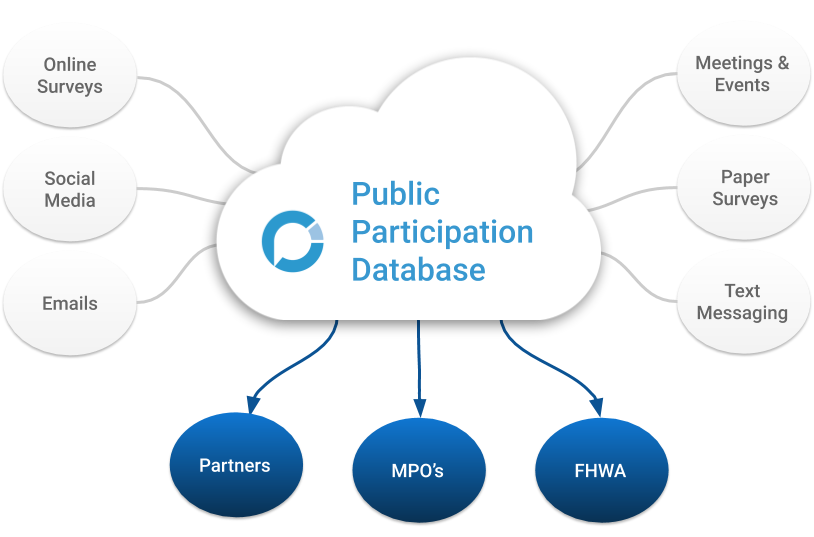
Building a public participation database of community engagement
“The first question we ask on every survey is if you would like to be added to our email list,” said Wilson. This contact information, along with cell phone and participation data is gathered and stored in a CRM, which acts as a central public participation database. This CRM is connected to email, which makes for easy follow up to share results or ask for another round of feedback.
In conjunction with the CRM, NCDOT uses unique URLs and text-in numbers to automatically group residents into segments, which allows Diane and her team to follow up with relevant information, new questions, and project updates to any given audience.

NCDOT engagement by the numbers
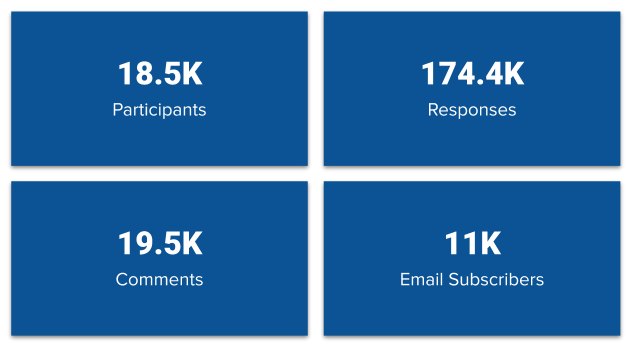
2 years into using PublicInput.com

Creating a Consistent Resident Experience With Text Message & SMS
NCDOT recently integrated text messaging surveying into their community engagement strategy for a survey for every passenger ferry in the state. This is one tactic for meeting resident where they are and giving the same experience as taking a survey on a project website, or via mailer.
“The first question is if you are a resident or visitor, and that provides a different set of questions for each,” said Wilson.
The initial survey garnered 6.9K responses from over 900 participants, 13% of which chose to engage via text message.
*To Mix or Not to Mix Data Collection Modes in Surveys. Journal of Official Statistics, 21(2), 205, pp. 233–255
Managing the full public involvement process with an all-in-one community engagement platform
NCDOT has created an engagement hub, where each project gets its own engagement page. This hub is where NCDOT points residents, even when reaching them in person.
“It is the link that we include on postcards, handouts, and in our newsletters, [as well as] the DOT website itself,” said Wilson. “What we’ve discovered is that people want to be updated, sent something every month. Even if it is just new alternative [route], or now we’re looking at this new possibility.”
Dynamic content and questions
With a drag-and-drop format, NCDOT is able to design project pages that educate the public and create more meaningful feedback:
- Videos and PDFs to explain the project
- Visuals to show alternative routes and project outcomes
- Responses are captured instantly and show results, question-by-question
- A go-to Question Library allows for easy replication of common and effective questions
- Contact information is automatically stored in the public participation database (CRM)
Community engagement that evolves with the project
After receiving an initial round of feedback, NCDOT will often go back to elaborate on questions that the public expresses the most interest in, show new alternatives, ask more specific questions, and/or add new documents and visuals—allowing the engagement page to evolve with the project itself.
“If people don’t understand, we can make a better video. We can email them. We can start to solve publicly perceived problems without having to add additional meetings, which are costly,” said Wilson. “If you can involve [residents] from the very beginning then they feel like they are a part of the process, even if they disagree we are seeing that they better understand.”
Project-based email communication
Every NCDOT project gets a unique email address that segments communication to identify which feedback belongs to which project. This project-by-project communication is not siloed off, but automatically organized by project, helping to easily make sense of two-way resident communication.
“On our Capital Boulevard project, we must have gotten 60 emails just saying thanks for sending this to me, please keep me updated,” Wilson said. “It has made my life easy, but also, it has made us more responsive to the public.”
Virtual public involvement at meetings
According to Wilson, outreach online along with better communication methods has also increased in-person meeting attendance. With online engagement data already analyzed, Wilson says that, “when we get to the meeting, we already know what people might have questions about.”
NCDOT also uses PublicInput.com for public meeting management:
- Live polling
- Display comments and using anonymity to keep conversation civil
- Maps on touchscreens – zooming in to show residents how the project may affect them
The option to take a paper survey, online survey, or text message survey – with all input being stored in one place

How an integrated civic engagement approach built public trust and goodwill
When Hurricane Florence hit Eastern North Carolina in September 2018, a public meeting for an important I-95 corridor project in Benson, NC was cancelled 20 hours before the meeting. This short notice created a problem for NCDOT: how to get the word out about the meeting, which had to be rescheduled and relocated.
Fortunately, Diane Wilson and her team had a public participation database full of resident email addresses that she could reach out to.
“We were able to send an email out to everyone who signed up and asked them to spread the word to their neighbors…The information got out so quickly, it amazed me.”
Residents took to social media to spread the word: Facebook, Twitter, and NextDoor. While the meeting was pending a new date and location, residents were kept up-to-date on NCDOT’s engagement hub website, which was able to be updated immediately. NCDOT also followed up with emails and social media posts, and eventually with postcards and radio ads.
One resident even went so far as to go to the initial meeting location and tape a handwritten note that the meeting had been cancelled and would be rescheduled.
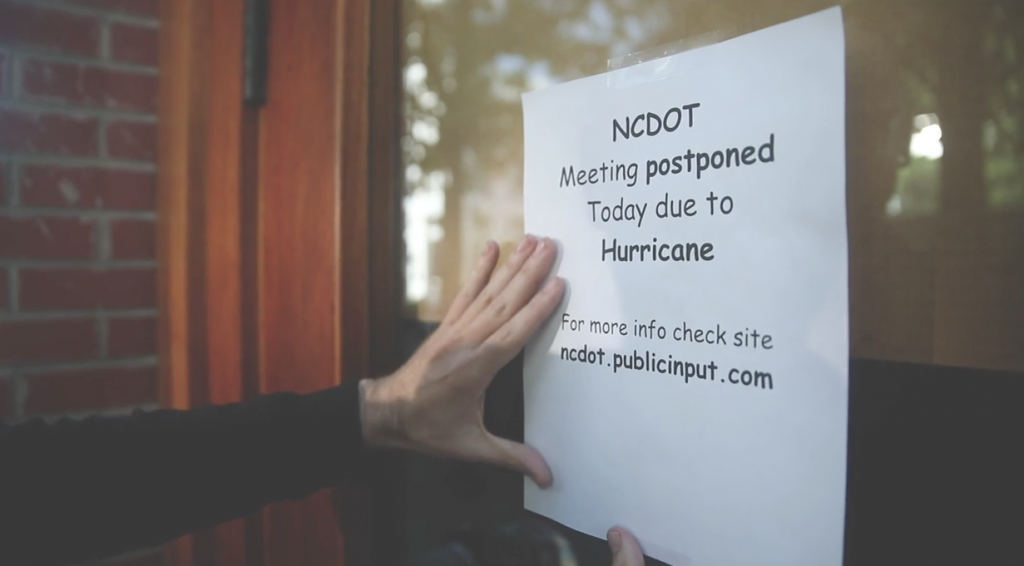
“What more can you ask?” said Wilson, “And then to have 300 people show up to a meeting three weeks later…These kind of meetings we typically get maybe 100 people, and I maybe got five phone calls with people asking about it, previously I would get 75.”
According to Wilson, the coordinated outreach fostered a tremendous amount of goodwill that built public trust.
“People want to know that when they reach out, somebody or something is there to say ‘we heard you and we’ll be right back with you’…We’re building their trust, we’re showing [the public] that we are being responsive to what they’ve asked, involving them in projects and the decisions being made.”
Complying with federal mandates, automatically
Along with following best practices for reaching, engaging, and capturing public input, NCDOT has been able to hold themselves to a gold standard for reporting results and complying with federal mandates.
“Federal Highways really likes that all the comments, along with their sentiment analysis, and emails are in one place,” said Wilson. “We are also able to pull all the data and discourse [from public meetings].”
With better organized email communication, NCDOT also feels at ease when it comes to following up with residents.
“One of our checkboxes is always ‘I need more information’. We are happy to email them, or even call. When we’re able to see what people don’t understand, we are able to come back and make sure that they do.”
With all input, comments, and email communication in one place, organized, and analyzed, Wilson has been able to save time and effort while also being able to ensure full compliance.
“This is working and this is working very effectively,” said Wilson. “I think Federal Highways is going to be thrilled.”
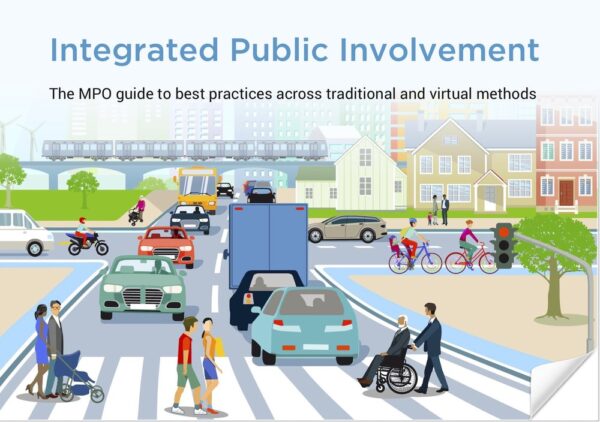
Automatically complying with FHWA mandates is just one benefit of integrated public involvement. See how transportation organizations are getting better outcomes through software that supports best practices:
Modernize your process with PublicInput, an all-in-one Community Engagement Platform
Integrating the public involvement process to save time and effort, while implementing best practices. Schedule a time to have a conversation with a PublicInput team member to talk about your community engagement goals.


